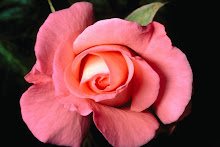Jasmine , Indian Flower
These flowers are also known as Jessamine (Jasminum) is a genus of shrubs and vines in the Family Oleaceae, with about 200 species, native to tropical and warm temperate regions of the Old World. The majority of species grow as climbers on other plants or on structures. The leaves can be either evergreen or deciduous, and are opposite in most species; leaf shape is simple, trifoliate or pinnate with up to nine leaflets. Jasmine flowers are generally white, although some species have yellow flowers. Unlike most genera in the Oleace which have four corolla `petals`, jasmines often have five or six lobes.
They are often strongly and sweetly scented. Flowering of Jasmine is generally done in spring or summer in most species, but in a few species, notably J. nudiflorum, are done in winter on the bare branches of deciduous species.The common name `jasm` is often given to unrelated plants with pale, sweetly-scented flowers and dark green leaves, such as Confederate or star jasmine, Gardenia jasminoides (Cape jasmine), Night blooming jasmine and (Carolina jasmine).
 The flowers are worn by women in their hair in southern and southeast Asia. Some claim that the daily consumption of Jasmine tea is effective in preventing certain cancers. Many species also yield an essential oil which is used in the production of perfumes. Jasminum sambac flowers are also used to make tea, which typically has a green tea, but sometimes an Oolong base is used. The delicate Jasmine flower opens only at night and is plucked in the morning when the tiny petals are tightly closed. They are then stored in a cool place until night. Between six and eight in the evening, as the temperature cools, the petals begin to open.
The flowers are worn by women in their hair in southern and southeast Asia. Some claim that the daily consumption of Jasmine tea is effective in preventing certain cancers. Many species also yield an essential oil which is used in the production of perfumes. Jasminum sambac flowers are also used to make tea, which typically has a green tea, but sometimes an Oolong base is used. The delicate Jasmine flower opens only at night and is plucked in the morning when the tiny petals are tightly closed. They are then stored in a cool place until night. Between six and eight in the evening, as the temperature cools, the petals begin to open.
Flowers and tea are "mated" in machines that control temperature and humidity. It takes four hours or so for the tea to absorb the fragrance and flavour of the Jasmine blossoms, and for the highest grades, this process may be repeated as many as seven times. Because the tea has absorbed moisture from the flowers, it must be refined so as to prevent it from spoiling. The spent flowers may or may not be removed from the final product, as the flowers are completely dry and contain no aroma. They simply add visual appeal and are no indication of the quality of the tea.
A double-flowered cultivar of Jasminum sambac in flower with an unopened bud. The flower smells exactly like the tea as it opens.Jasminum sambac is also the National Flower of Indonesia, where it is known as "Melati", and of the Philippines, where it is known as "Sampaguita". In Indonesia (especially the island of Java), it is the most important flower in wedding ceremonies for ethnic Indonesians. Jasminum officinale is the national flower of Pakistan, where it is known as the "Chambeli" or "Yasmine". In Sanskrit, it is called Mallika. Jasmine is cultivated at Pangala, in Karnataka, India, and exported to Middle East countries. In Thailand, jasmine is used as a symbol of mother.J. fluminense is an invasive species in Hawaii, where it is sometimes known by the inaccurate name "Brazilian Jasmine".
Saturday, April 26, 2008
Jasmine
Labels:
Flower History
Subscribe to:
Post Comments (Atom)


No comments:
Post a Comment